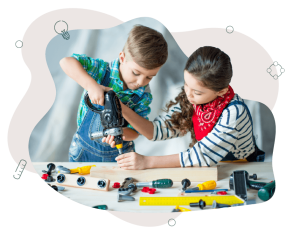38 Assessing play abilities and skills
Students enter school demonstrating many different play skills and levels of ability. For example, some students will be able to play with a group of friends, negotiate, debate, and cooperate with others. Some students will be able to pretend to be someone else for an extended period of time, including understanding what that person would say, act and do.
What are play skills?
Play skills are a collection of abilities that students demonstrate and apply when involved in play. As identified by Stagnitti and Paatsch (2018as cited in DET, 2020a), play skills include developing playscripts, sequencing play, object substitution, imposing meaning, role play, and metacognition. What is important for teachers to consider is the role peer collaboration and teacher guidance plays in supporting students during their play.

Read, look, or listen
Observing and assessing play
It’s important to identify play skills in order to assess them. The interactivity below—based on the research of Stagnitti (2021) and Stagnitti and Paatsch (2018)—describes six types of play skills that you might see in a classroom. These six types of play are often found in imaginary and dramatic play.
Engage and extend
Look through your own childhood photos or those of your family. Or maybe you have video footage to explore. Can you observe any imaginary or dramatic play in those memories? Make a collage of photos or screenshots from video footage, then add notes to different images that outline which play skills were visible.

